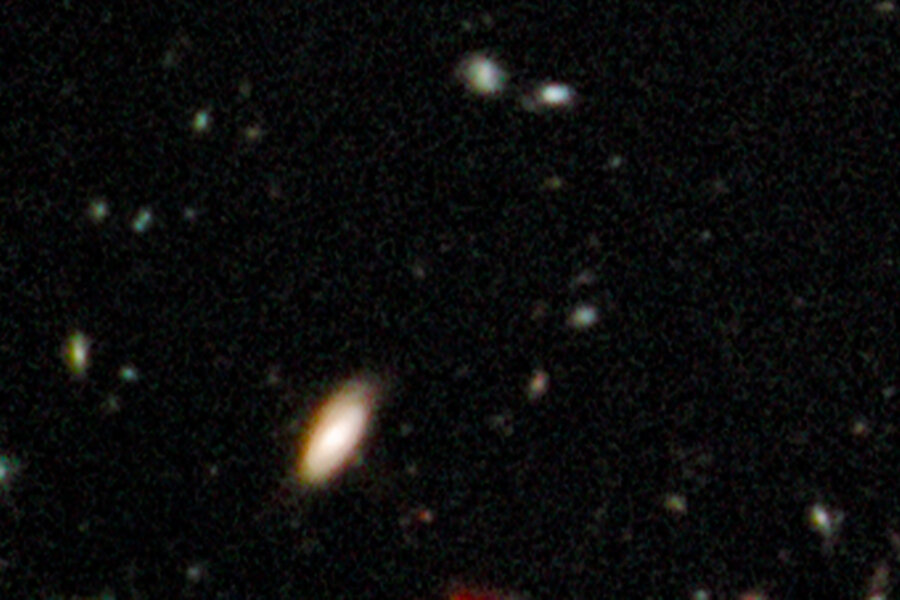How do we really know how old the universe is?
Loading...
After a fortnight gallivanting around Europe and being more creative in my modes of transport than expected thanks to an unpronounceable mountain in Iceland, I’m back in Hawaii. On the flight to LA I ended up chatting to a bloke who works for a large US computer firm about various geeky things. The “what do you do?” question came up, and given he seemed worth talking to I opted for astronomer rather than physicist.
Then at a lull in the conversation he volunteered the question, “how do they know how old the universe is?” We’ve been planning to add a “How do we know?” category to the blog so this seems like the perfect place for me to start.
The simplest measure of the age of the universe is known as the Hubble Time. The universe is expanding, we know this because we can see that light from distant galaxies is Doppler Shifted towards redder wavelengths, indicating they are moving away from us. The further away the galaxy, the faster it moves away. This is known as Hubble’s Law.
The rate at which the recession velocity of a galaxy increases with its distance for us is known as the Hubble Constant. If we know how fast the universe is expanding, we can extrapolate back and see when the universe would have a size of zero, ie. when the big bang happened. Of course if we know how long ago the big bang was, we know roughly how old the universe is.
So all we need is the Hubble Constant, easy yeah, erm not really. The value of the Hubble Constant was for half a century the subject of great dispute. This period was known as the Hubble Wars which conjures up massed ranks of Welsh longbowmen cutting down the flower of French chivalry to establish domination over the fundamental constants of the universe. In reality it was a debate about measuring the distance to far off galaxies.
Getting recession velocities of galaxies is pretty easy, but to find the Hubble constant, you’ve got to know the distance of each galaxy too. Measuring distances in astronomy is pretty hard, something we might deal with later in this series, so various novel techniques must be used.
When Edwin Hubble first worked on the recession velocities and distance of galaxies in the 1920s and 30s he used a fortuitously odd type of star as a “standard candle”. In astronomy, if you know how much light a star or galaxy puts out in total and how much we receive on Earth, you can combine these to get how far away it is. Hubble used unstable stars which have finished their main life as a normal star, known as Cepheid variables. They pulsate, and so vary in brightness, and the really lucky bit is that the pulsation rate is related to the total light emitted by the star.
So the pulsation period gives the total light emitted - combine this with the apparent brightness and you get the distance. The problem is that you need a pretty powerful telescope to resolve individual stars in distant galaxies. Even with the largest telescope available in the middle of the last century, the 5m Hale Telescope on Palomar, only relatively nearby galaxies can have their Cephieids resolved from the mass of other stars. So astronomers had to get creative.
This doesn’t mean they went off and played guitar in Queen, Coldplay or, (as rumoured in the case of one astronomy blogger) the opening act for The Velvet Underground. Science itself is a creative process, trying to dream up innovative solutions to work around the limitations of the available technology and data. The work mostly rested on calibrating a myriad of new distance indicators using local galaxies at known distances and applying these new estimates to more distant objects.
The results fell into two broad camps, one side led by the American astronomer Allan Sandage claimed a value of about 50 (I won’t go into the slightly obtuse units used for this measurement) and another led by the French cosmologist Gerard de Vaucouleurs claimed a value of about 100. For decades they fought over seeming minor points that shifted one particular rung on the intricate astronomical distance ladder up or down. From how dust in our own Galaxy affects the measured brightnesses of distant galaxies to subtle biases in samples of galaxies to the brightness of exploding stars, no point in the other group’s work was too minor to pick apart.
Fast forward to the end of the last century and say hello to the now 20-year-old Hubble Space Telescope. One of its key projects was to pick up where its namesake left off and find the Hubble Constant using Cepheid variables in more distant galaxies. After a huge amount of effort it came out with a result of about 72, giving an Hubble Time of roughly 13.8 billion years.
This fits in fairly well with the estimated ages of the oldest stars. More recent measurements, such those from the WMAP study of ripples in the cosmic microwave background and more up to date supernovae studies have supported a value of roughly 70. However they also predict the expansion of the universe is accelerating, meaning our simple extrapolation, assuming constant expansion won’t give exactly the right answer.
I didn’t say all this to the bloke on the plane, we were about to land so I didn’t have much time, but I hope I got it across fairly well both to him and you.
Related
Scientists simulate early cosmos, find gigantic stars
Hubble telescope glimpses universe's earliest galaxies
Niall Deacon blogs at we are all in the gutter
View all of the we are all in the gutter posts on the Monitor.


